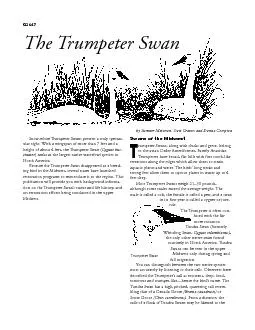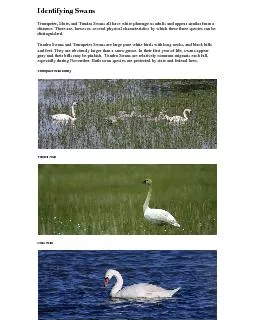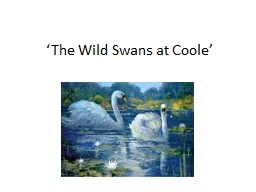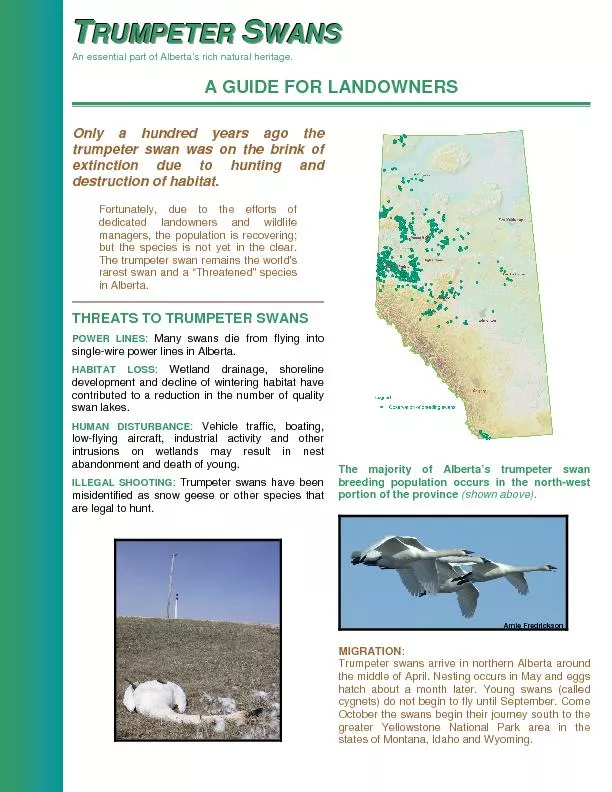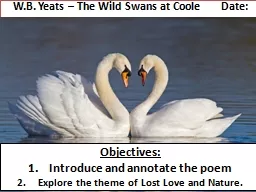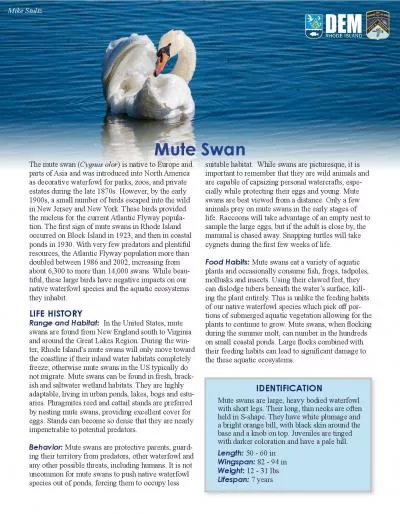PDF-Snow-white Trumpeter Swans present a truly spectac-ular sight. With a
Author : yoshiko-marsland | Published Date : 2015-11-08
Cygnus buc ranks as the largest native waterfowl species inNorth America Because the Trumpeter Swan disappeared as a breeding bird in the Midwest several states
Presentation Embed Code
Download Presentation
Download Presentation The PPT/PDF document "Snow-white Trumpeter Swans present a tru..." is the property of its rightful owner. Permission is granted to download and print the materials on this website for personal, non-commercial use only, and to display it on your personal computer provided you do not modify the materials and that you retain all copyright notices contained in the materials. By downloading content from our website, you accept the terms of this agreement.
Snow-white Trumpeter Swans present a truly spectac-ular sight. With a: Transcript
Download Rules Of Document
"Snow-white Trumpeter Swans present a truly spectac-ular sight. With a"The content belongs to its owner. You may download and print it for personal use, without modification, and keep all copyright notices. By downloading, you agree to these terms.
Related Documents

